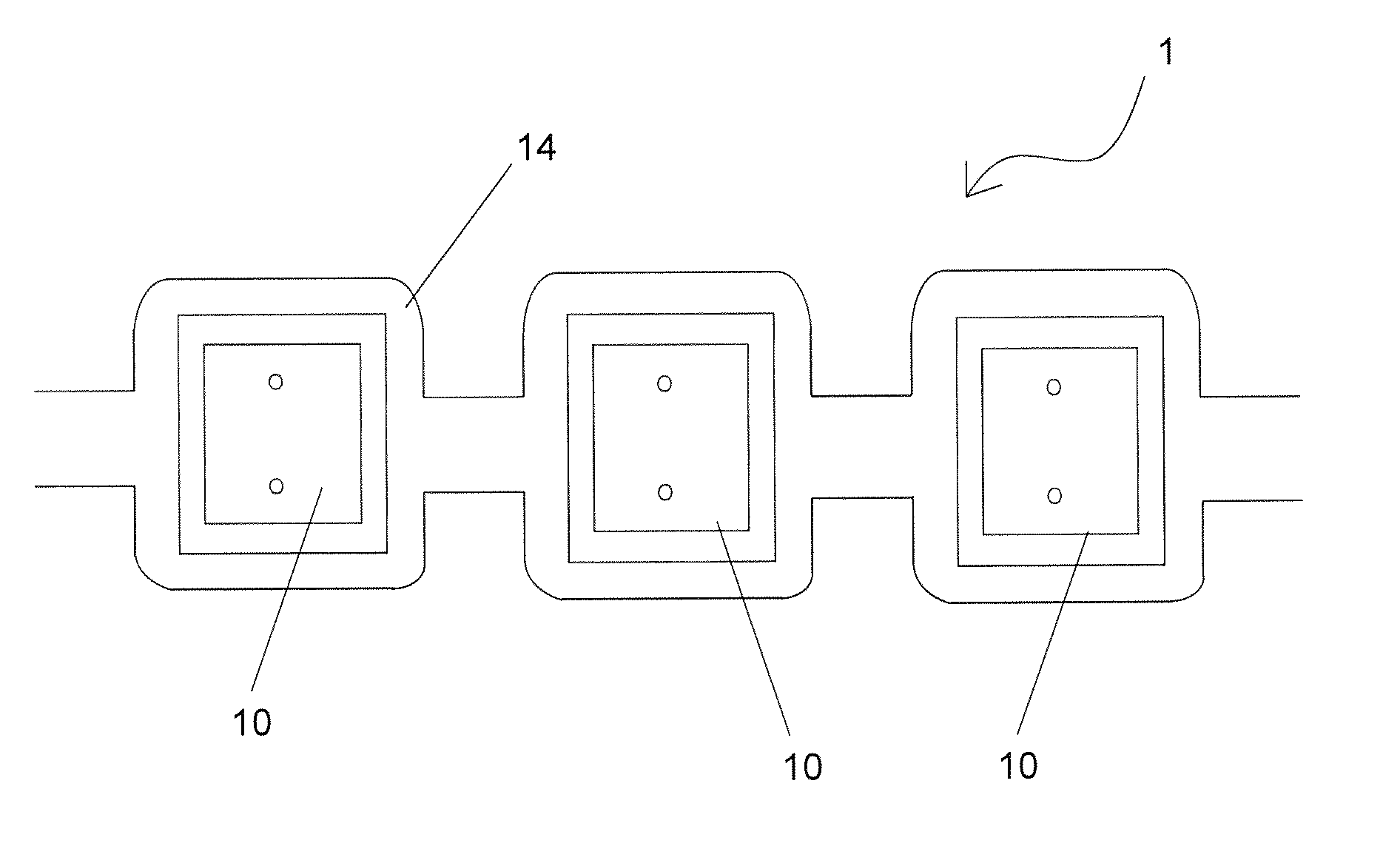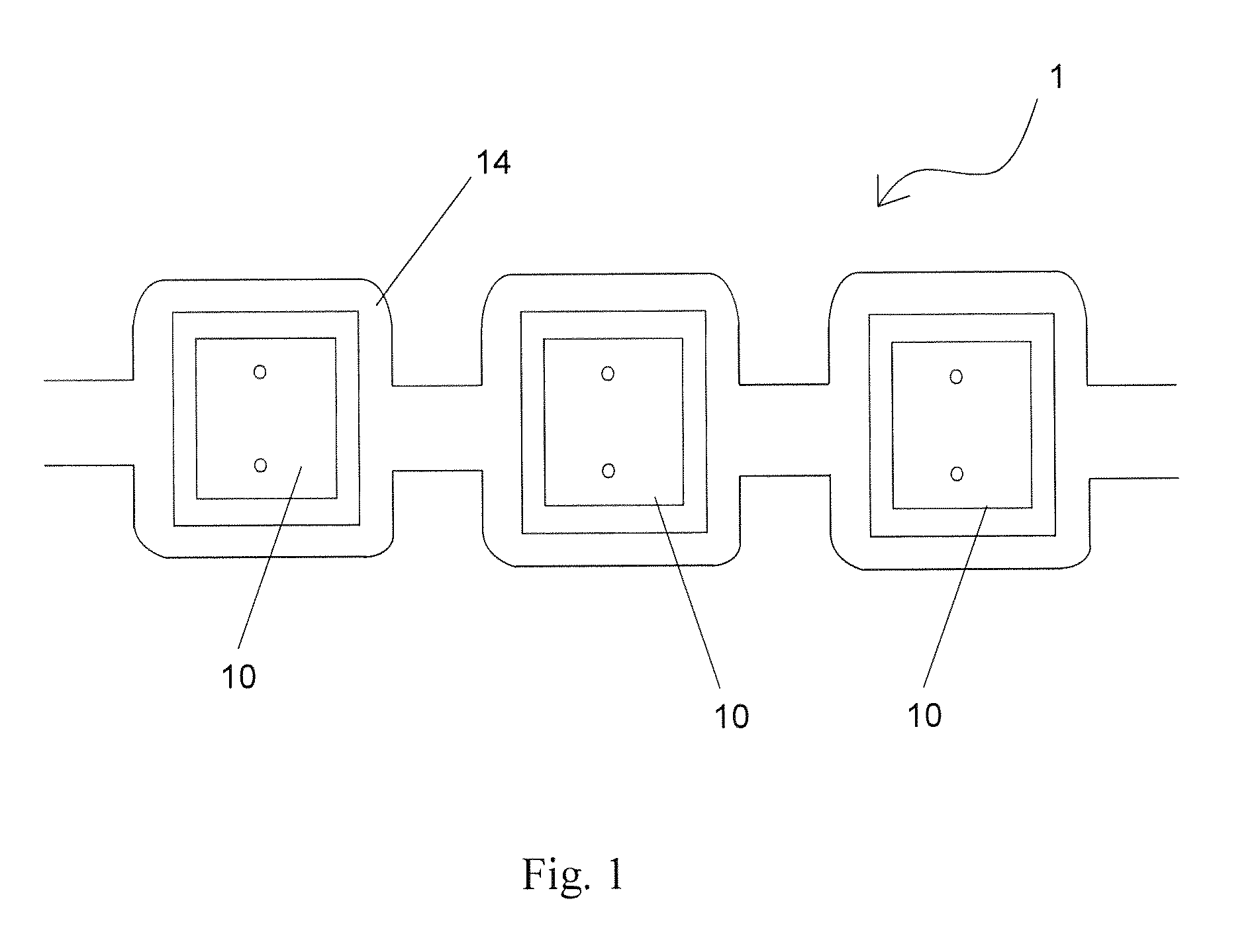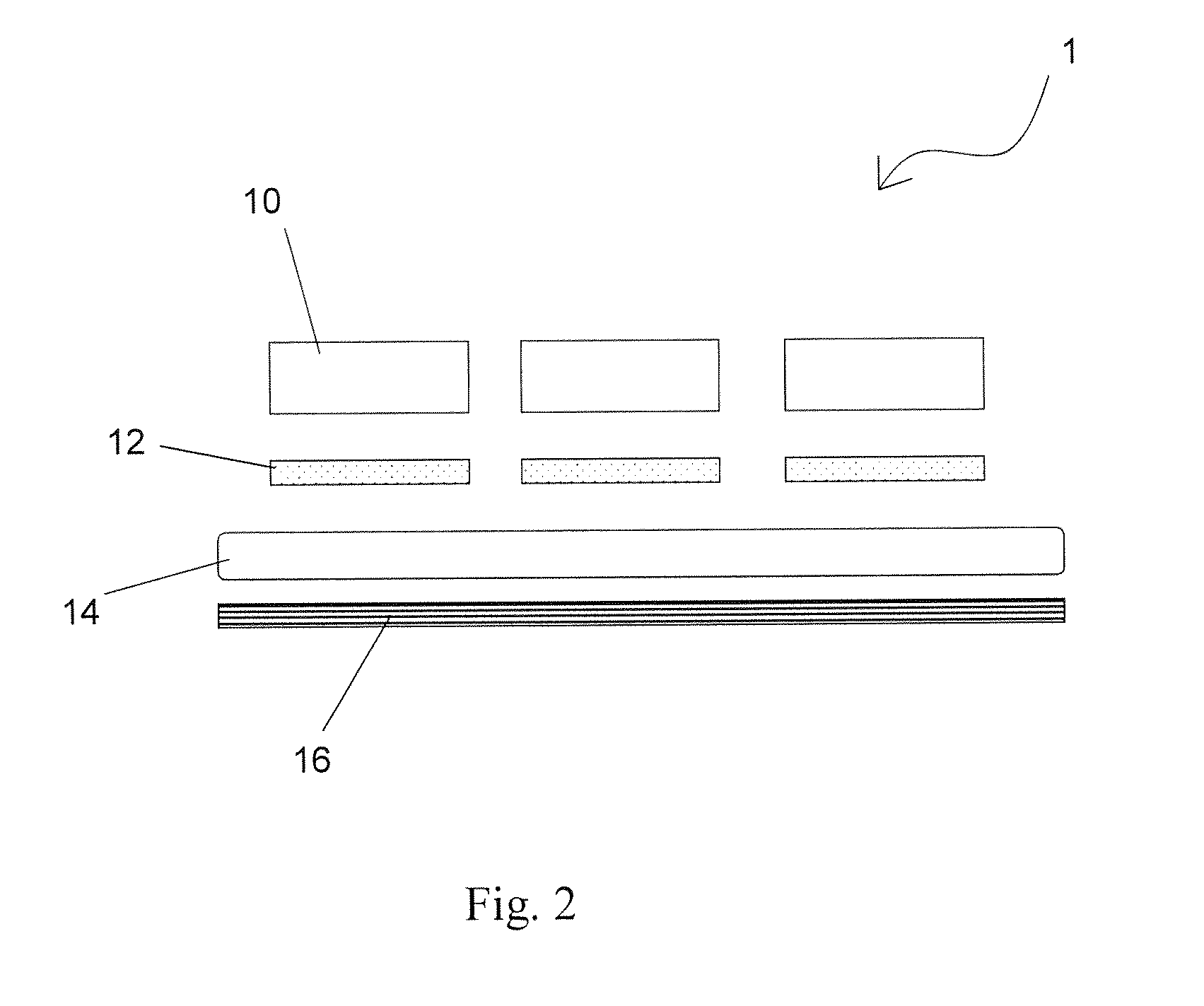Thin planar biological sensor
a biological sensor and planar technology, applied in the field of biological sensors, can solve the problems of affecting the accuracy of biological measurements, the conductivity of conductive glue decaying with time, and the electrodes of biomedical measurement systems also need conductive glu
- Summary
- Abstract
- Description
- Claims
- Application Information
AI Technical Summary
Benefits of technology
Problems solved by technology
Method used
Image
Examples
Embodiment Construction
[0028]Refer to FIG. 1 and FIG. 2, which respectively shows a top view and a side view of a thin planar biological sensor according to one embodiment of the present invention. As shown, the thin planar biological sensor 1 comprises at least one flexible electrode 10, at least one conductive plate 12, a buffer layer 14 and a printed circuit board 16, wherein the flexible electrode 10 is made of silicon-silver-based material, that is both bendable, conductive, and non-allergy. According to the present invention, a ratio of the silicon to silver-compound is about 7:3. And, the silver-compound further comprises silver and silicon-dioxide (SiO2), in which a ratio of silver to silicon-dioxide is 1:9. Since the proposed silver-compound has great conductivity, and shows extinct flexibility while combined with SiO2, it helps to make the proposed biological sensor much more flexible and cozy than ever. Therefore, when the thin planar biological sensor of the present invention is placed on a su...
PUM
 Login to View More
Login to View More Abstract
Description
Claims
Application Information
 Login to View More
Login to View More - R&D
- Intellectual Property
- Life Sciences
- Materials
- Tech Scout
- Unparalleled Data Quality
- Higher Quality Content
- 60% Fewer Hallucinations
Browse by: Latest US Patents, China's latest patents, Technical Efficacy Thesaurus, Application Domain, Technology Topic, Popular Technical Reports.
© 2025 PatSnap. All rights reserved.Legal|Privacy policy|Modern Slavery Act Transparency Statement|Sitemap|About US| Contact US: help@patsnap.com



